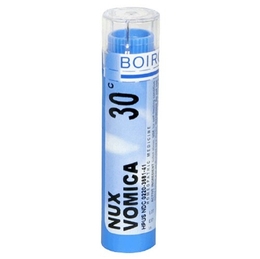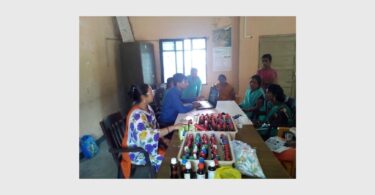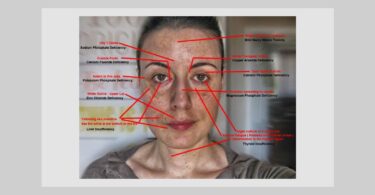As a psychologist and a homeopath I have worked for decades in substance abuse treatment programs. I would see people suffering from addiction go into treatment, get “clean” from the drugs and then relapse or go back to drug use. To the observer this is startling. Why would someone go through all the pain and suffering of withdrawal and then return to drug use. One part of the answer is the severe cravings and other symptoms clients experience as their own natural neurotransmitters (NT’s) resupply their body. The period of time between complete drug withdrawal and the body’s ability to create an adequate supply of our natural body chemistry (NT) takes weeks or months depending upon one’s general state of health, drugs used and length of drug usage. During this time a condition that is referred to as Post Acute Withdrawl Syndrome (PAWS) creates symptoms which often lead to immediate relapse. It seemed a natural step to bring homeopathy to focus on this problem.
What is Addiction
Most people think of addiction as a choice, that people enjoy getting high and can stop at any time. The choice to use drugs is a choice only early on. Many of us who have enjoyed a drink of alcohol know it can be a relaxation. A glass of wine with friends can be enjoyable. Many of us have had the experience of using a prescription pain killer (usually an opiate and a close relative of heroin) after surgery and know it stops the pain and also gives a floating, euphoric feeling. Those pleasant experiences created by the drugs (be that alcohol, prescriptions or recreational/ street drugs) are the invitation to a drug problem. We want more of that good feeling. What most people don’t realize is that too much of a drug we call addictive creates a medical problem and stopping the drug is as difficult a task as curing our own asthma, or not having a heart attack.
What makes a drug addictive is the drug’s chemical similarity to our body’s own neurotransmitters. When we take drugs (including alcohol) too often, the body mistakenly thinks the drugs are the body chemistry-and so our body cuts down our own production of neurotransmitters and the body then craves more drugs. We don’t get as “relaxed” or “euphoric” and so we take more of the drugs looking for that feeling. It is a vicious cycle. Soon the experience of looking to relax becomes an experience of looking for more drugs so we won’t go into withdrawal and get sick, because if the body does not have a good supply of NT’s, various body functions starts to break down and we become ill.
More than a decade ago, Candace Pert, PhD (Molecules of Emotion ) at the National Institute of Health was part of a research team that identified the fact that addictive drugs are extremely similar to our own body chemistry. The body has more than 130 body chemicals (neurotransmitters) which allow us to live our lives. Just as the bones give our bodies structure and support, and muscles and tendons allow us to lift, turn and even smile, the neurotransmitters provide the chemistry so the body can do what a body does… feel and express emotions, digest food, create new cells, think thoughts, enjoy, reflect, live our lives.
When we unwittingly replace our body chemistry with similar chemicals from external sources, the body efficiently slows production of our own life giving chemicals. This is all well and good except, these look-a-like neurotransmitters do other things besides replace NT’s. Remember what it feels like and looks like to be intoxicated? Addictive chemicals also cloud our judgment, make our thinking fuzzy, instigate extreme irritation and sometimes violent behavior, make us pass out and not attend to things and people in a responsible manner. They also create the beginnings of a host of other physical problems such as diabetes, hypertension, pancreatitis. Like the difference between clean fresh water and polluted water-both can give the body water but one brings other problems along with it as well.
A family history of addiction can be a predisposing factor, just as a family history of any illness makes the members of the family more susceptible. Other factors which speed up addiction are earlier age of first use and amount and frequency of drugs used. Many people who end up with an addiction start as a way of self medicating the pain of their lives. Most knew they did not want the addiction problems they saw in their families or in the community. None of them realized addiction is an illness and they all thought “it won’t happen to me!
Going into Recovery
When someone gets “sick and tired of being sick and tired” and seeks treatment, what happens? First, the person has to go into a medically supervised program called detoxification. If you try to stop drug addiction “cold turkey” the body often goes into a kind of shock called withdrawal, which can be life threatening.
Let’s use an analogy of water. If we suddenly stop the supply of water to the body, thirst ensues (cravings) and then dehydration (withdrawal) and finally death. If we use either clean water or polluted water the body functions. However, polluted water carries other contaminants creating secondary problems. One of the differences between thirst and addiction is that the body can manufacture its own neurotransmitters (i.e. thirst/craving quenchers) but cannot manufacture its own water supply.
A similar process happens when the “look alike” NT’s are stopped from entering the system. The medical treatment during withdrawal is to safeguard the body from going into severe withdrawal and dying. What does happen during medically supervised withdrawal is that the patient has many difficult and unpleasant physical symptoms, as in vomiting, diarrhea, leg spasm (where the phrase “kicking the habit” comes from) and seizures. On paper they look one dimensional but an actual detox is a very difficult physical readjustment.
Once detoxed, a life of recovery begins. The stay at a detox is short, 3-5 days, then a client has the option of going home and using outpatient treatment or going to a drug treatment program where the client will learn how to deal with cravings and the ups and downs of life without drugs. The drugs were good but abusive friends before, blunting the problems of life but also inflicting other problems. How to cope with “life on life’s terms” while learning how to manage drug cravings while your body recovers is no easy task.
Some women leave detox and enter a treatment program. Most often these women were still suffering from Post Acute Withdrawal Syndrome (PAWS) with symptoms of cravings for drugs, irritability, mental confusion, low energy, sleep problems and lingering detox symptoms such as diarrhea, stomach upset etc. Cravings and general discomfort post detox typically result in early dropout from treatment and relapse into further drug use. As mentioned earlier, relapse is common during this phase due to the nearly intolerable drug cravings.

( Read Nux vomica materia medica )
Applying the Model
Since 2006, I have had the opportunity to try using a homeopathic approach to help people newly sober. In three post detox treatment programs we used Nux vomica 200c 1-2 doses as a genus epidemicus remedy for PAWS acutely. All clients entering the programs were offered one to two doses of Nux Vomica 200c after briefly being introduced to homeopathy and our understanding of its usefulness in reducing cravings for alcohol and other drugs.
There were three cohorts of clients, all women ages 18-70, of varied ethnic backgrounds, all with long-term addiction to multiple recreational and prescription drugs. The first two cohorts were women living at a 6 month residential substance treatment program in Boston. In each of these cohorts, clients self-selected to take or not take a single dose of homeopathic Nux vomica 200c after receiving information as to its benefit to reduce cravings. The third cohort was in another one month long residential treatment center in Boston with similar demographics and exact same procedure. Again clients self-selected to take or not a single dose of Nux vomica 200c.
Results

Since drop out during early phases of treatment due to drug cravings is common, our goal was to reduce PAWS and stabilize the women enough that they could complete the treatment program (six months for first and second cohorts, one month for third cohort) and thus increase the likelihood of continued sobriety.
As this was a treatment program not a research project, data was kept but there was little in the way of analysis. Our rough data with two separate cohort groups (2006 and 2007) showed that women who chose the homeopathic protocol (it was a self-selected sample) completed the program at a percentage of 66% (for first cohort) and 63% (for second cohort) versus 33% and 37% for those who did not choose homeopathy . Both cohorts were women between 18 and 70, a wide range of ethnicity, and all multiple drug users with long histories. It was a very promising finding.
In Dec 2010, we were invited to open a similar homeopathic clinic at a large publicly funded treatment center at a Boston area substance abuse treatment program. This was a 28 day program — a much shorter time with extremely high dropout rates. We again instituted the same protocol. This time we were able to have their staff statistician compile the data (see chart.) Demographics for client population were again similar to previous groups. A full year of clients and analysis (Dec 2010-Dec 2011) showed the same trend of successful completion of treatment. A significant number of clients using homeopathy (n=138), 63%, completed treatment as compared to those who did not select homeopathy (n=130) 42%. Despite the sample being self-selected and the data from the first two cohorts being informally collected, as it was a clinic and not focused on research, the trend of a similar percentage of successful treatment completion of those using homeopathic treatment compared to those who did not warrants further study.
As a result of this work, the Massachusetts Dept of Public Health, Bureau of Substance Abuse invited us to present our findings at their annual Innovations in Treatment in 2014 and have subsequently funded two statewide seminars in using homeopathy in substance abuse treatment designed specifically for substance abuse counselors and program directors. One was completed in 2014 and a second is scheduled for 2015.
The Sidewalk Clinic
In the community, we have been continuing our work at an outpatient clinic in Inner City Boston. Our clients are often newly sober and or struggling with relapse issues. We have continued using Nux vomica 200 as a first step, very much as someone uses Arnica as a first step in emergency injury cases. As a result I have begun to think of Nux as the “Arnica of Addiction.” Our findings are similar to those in the residential programs but the obstacles to cure when a client is living in the open community, often in neighborhoods rife with violence, stress and drugs are greater.
This clinic is staffed by myself and students from Teleosis Homeopathic School and Collective. For information or to donate to this probono clinic you can send you tax deducitble donation to Loretta Butehorn PhD 345 Neponset Ave Boston, MA02122. [email protected]. Checks should be made out to SOTM/The Sidewalk.
[1] Sukul
[2] Van der Zee





Good effort by Loretta… Homoeopathy works no doubt.. We have to dare to give it to patients….
Faith in homeopathic medicine once occurs it will be very fruitful for ur whole life
Why did you only offer 1 or 2 doses?